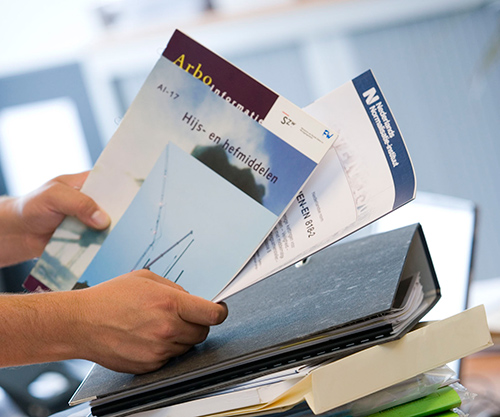Working safer due to tightened work equipment guidelines for high-pressure hydraulic lifting tools
The EKH (association of recognised inspection companies for lifting equipment) is the institute for safety in hoisting and lifting operations in the Netherlands. It has updated its work instructions for the inspection and approval of high-pressure hydraulic lifting tools. The most important update concerns the manner in which the inspection must be carried out. It now stipulates that the entire hydraulic system must be pressure-tested. The jacks must also be tested using a dynamic testing frame with an integrated and calibrated measurement device.
 Working safely
Working safely
The EKH has set the goal of raising the level of safety to the highest possible level in the area of hoisting and lifting tools. It does so by uniformly implementing the legal standards and guidelines that apply to the approval of hoisting and lifting equipment. All is based on the European Directive 2009/104/EG on the health and safety requirements for the use of working equipment by workers at work. This provides users (employers and employees) of hoisting and lifting equipment with support that is no longer provided by the Dutch government. The recognized EKH work equipment guidelines describe which actions must be carried out during the inspection and approval of hoisting and lifting tools.
All components
EKH expends a lot of time and energy continuously monitoring laws and regulations, standards, decisions, and technical developments to ensure its work equipment guidelines are up to date. The organization collaborates with different specialists in the market because the Dutch government is increasingly backing off from drawing up safety regulations. This also applies to hydraulic lifting tools. The tightened EKH work equipment guidelines stipulate that hydraulic jacks must be inspected and tested annually to ensure these are in good condition. This applies to all components of the jack, including the hydraulic pump, hydraulic hose, jacks, and other system components. The manner of testing has also been made stricter, namely, the entire system must be pressure-tested and tested for pressure resistance.
Visual inspection unreliable
In the past a visual inspection of a hydraulic jack was seen as a proper method to determine its good condition. It has been proven that a visually inspection of a hydraulic jack is not sufficient for properly assessing whether it is still in good condition and safe to use. This is certainly the case because in practice, this type of industrial equipment is not always treated with care. The jack must be pressurized to detect whether there is any internal damage. This is usually done using a static test, which has proven to be an unreliable method.
Reliable test method
The tightened EKH guidelines stipulate that the entire stroke of the jack cylinder must be tested while it is under maximum pressure (i.e. overpressure at 105%). During testing, the pressure must be continuously monitored with a calibrated measuring instrument. Hidden defects are detected earlier using this test method, which prevents unnecessary breakdowns and hazardous situations in the workplace. “These are crucial updates,” said safety expert Robert Dekkers of Holmatro. “It is a positive development that the entire hydraulic system must be tested and that a lot of attention is focused on the risks from damaged hydraulic hoses. The fact that the test method now involves the entire stroke of the jack and that the tool — both repaired and after a repair — must be tested by a specialized company or manufacturer, provides a significant contribution to working safer using hydraulic systems. So, we warmly welcome the tightened EKH work equipment guidelines! And we hope that this will set a new standard for more European member states.”